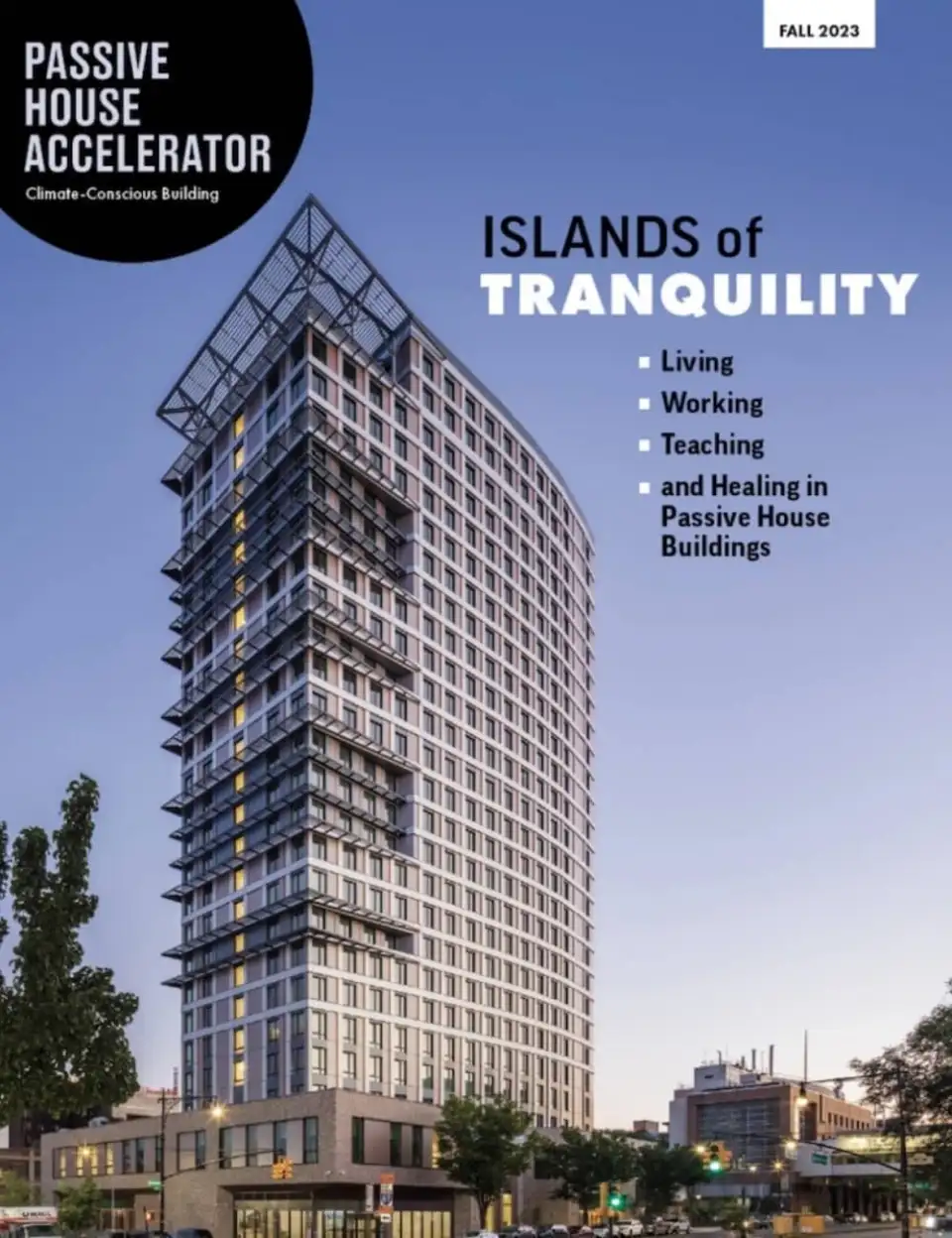
The latest edition of Passive House Accelerator magazine is now available for download! A great deal of the magazine is dedicated to exploring how Passive House buildings improve occupant quality of life by optimizing thermal comfort, improving indoor air quality, and increasing acoustic performance.
On the cover is 425 Grand Concourse, which was also featured in the most recent episode of Massive Passive with host Carmel Pratt. While the article and the episode both discuss the technical aspects of the building’s design, the article takes a deeper dive into the effects of air and noise pollution on mental health. It also notes that Passive House design can mitigate these stressors, which are typically more pronounced among individuals in environmentally burdened and underserved communities like the South Bronx.
Improving tenant health is also top of mind at another Bronx project, the Highbridge, which is being designed by Magnusson Architecture and Planning (MAP). As Sara Bayer, associate principal and director of sustainability at MAP, explains in the article, “The life expectancy in this neighborhood is 2.6 years shorter than the city average. That helped us frame the project around health more in terms of what positive impacts this project should bring.”
Both of these projects are recipients of New York’s Buildings of Excellence Award, though they are not the only ones featured in the magazine. We also have stories about Brooklyn's Brownsville Arts Center and Apartments, the Beacon in Manhattan, 1818 Fifth Avenue in Troy, and the Bank Lofts in Richfield Springs. Beyond the state of New York, the magazine covers the world’s first Passive House-certified hospital in Germany, prefabricated classrooms in Spain, and how EnerPHit techniques can apply to social housing in Mexico. There is also a really in-depth article on a deep energy retrofit located just outside of Baltimore, Maryland, as well as a journey to the world’s largest outdoor earthquake simulator, where researchers from throughout the U.S. were testing to see if mass timber structures can withstand extreme seismic activity.
We hope you enjoy it!